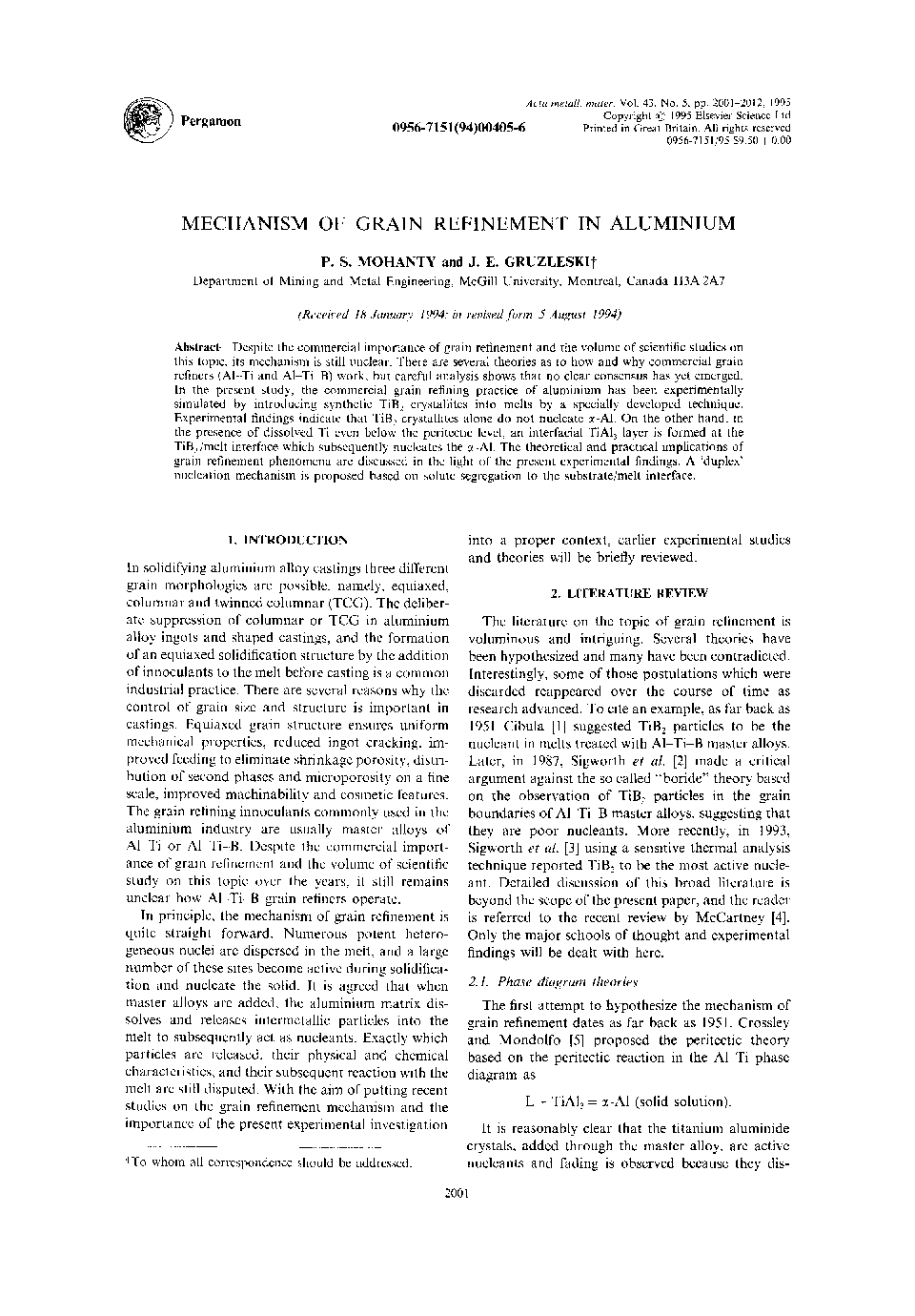| Article ID | Journal | Published Year | Pages | File Type |
|---|---|---|---|---|
| 1598647 | Acta Metallurgica et Materialia | 2012 | 12 Pages |
Abstract
Despite the commercial importance of grain refinement and the volume of scientific studies on this topic, its mechanism is still unclear. There are several theories as to how and why commercial grain refiners (Al-Ti and Al-Ti-B) work, but careful analysis shows that no clear consensus has yet emerged. In the present study, the commercial grain refining practice of aluminium has been experimentally simulated by introducing synthetic TiB2 crystallites into melts by a specially developed technique. Experimental findings indicate that TiB2 crystallites alone do not nucleate α-Al. On the other hand, in the presence of dissolved Ti even below the peritectic level, an interfacial TiAl3 layer is formed at the TiB2/melt interface which subsequently nucleates the α-Al. The theoretical and practical implications of grain refinement phenomena are discussed in the light of the present experimental findings. A 'duplex' nucleation mechanism is proposed based on solute segregation to the substrate/melt interface.
Related Topics
Physical Sciences and Engineering
Materials Science
Metals and Alloys
Authors
P.S. Mohanty, J.E. Gruzleski,
